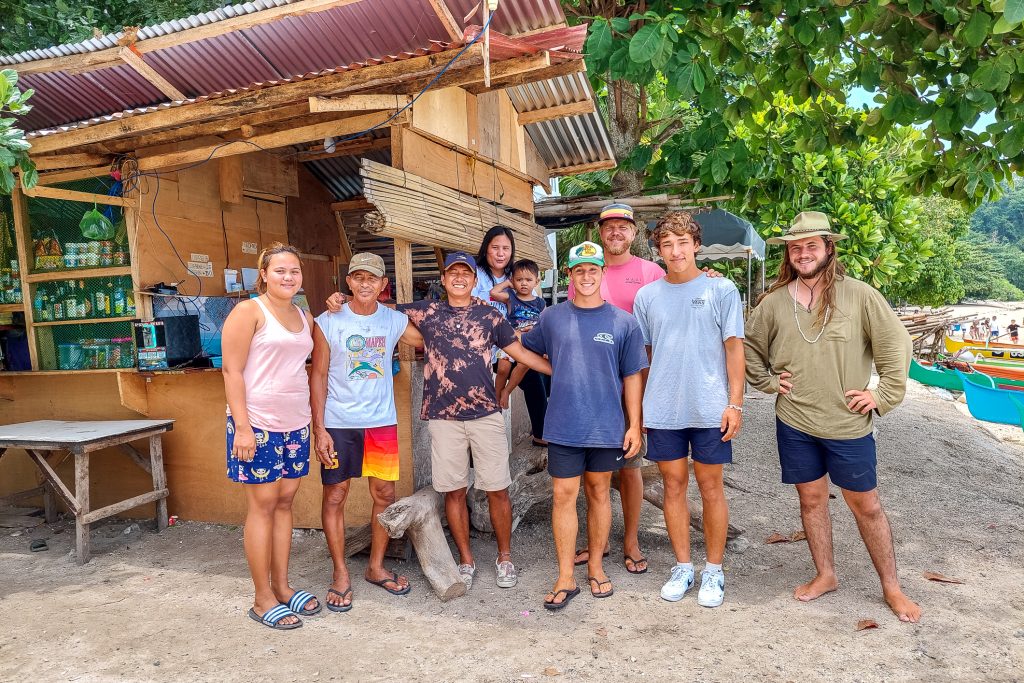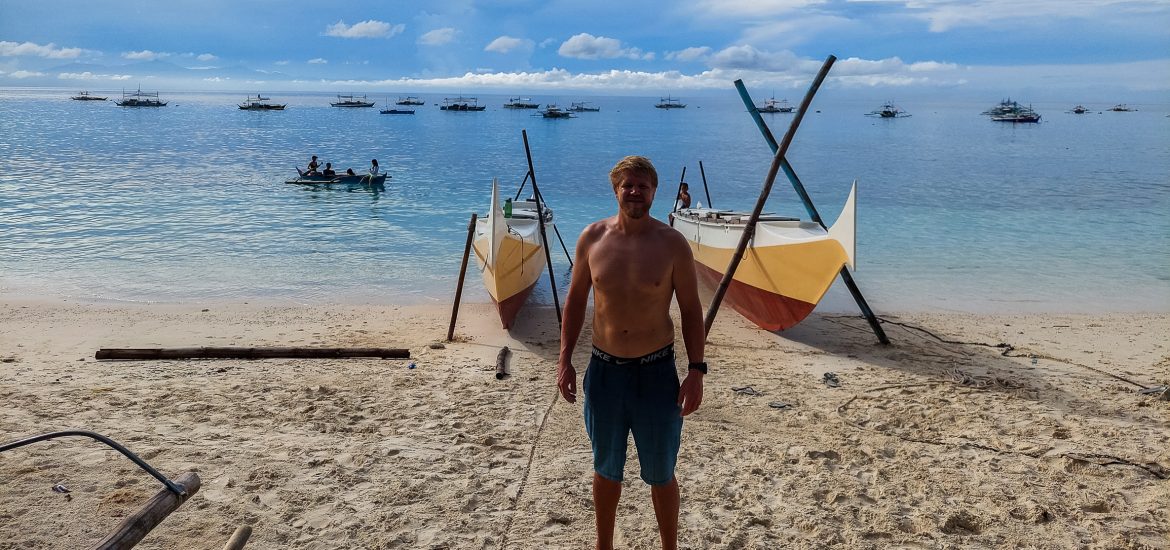The fact that we can take our boat apart is pretty special. We need no tools to do so and it can all happen in the span of a day! Our boat is lashed together by ropes and is light enough to manhandle. Still it is solid enough to cross oceans.
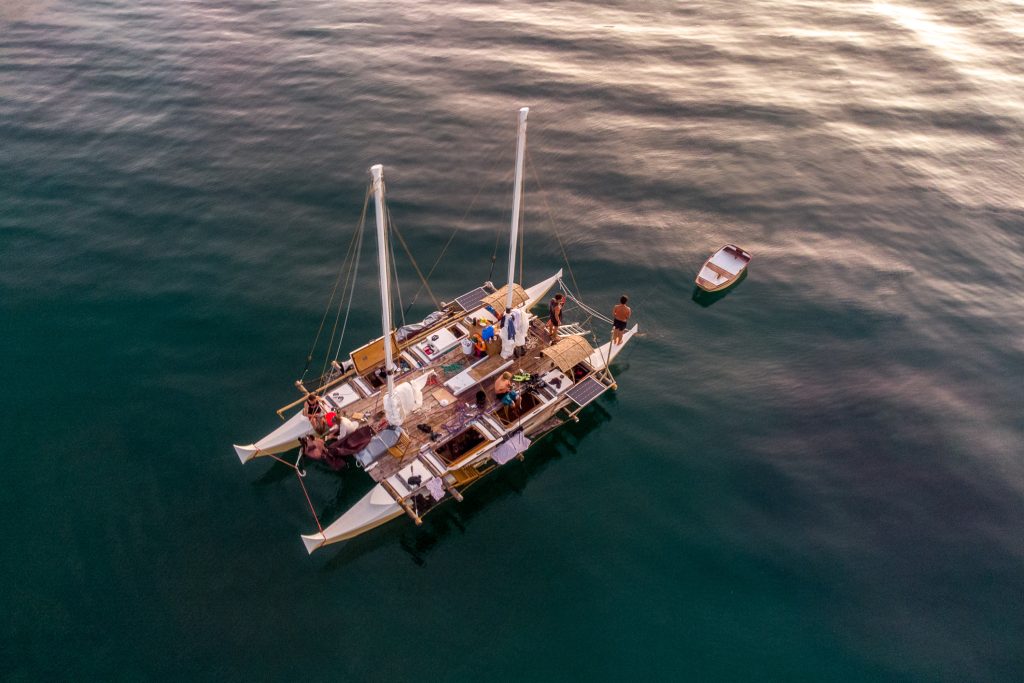
When we put our boat in the water, we had a specially made cradle from the boatbuilder to stabilize our hulls and to carry them down the beach. When we took the boat up 2 months later, we had none of that. What we did have was bamboo and local fishermen eager to help.
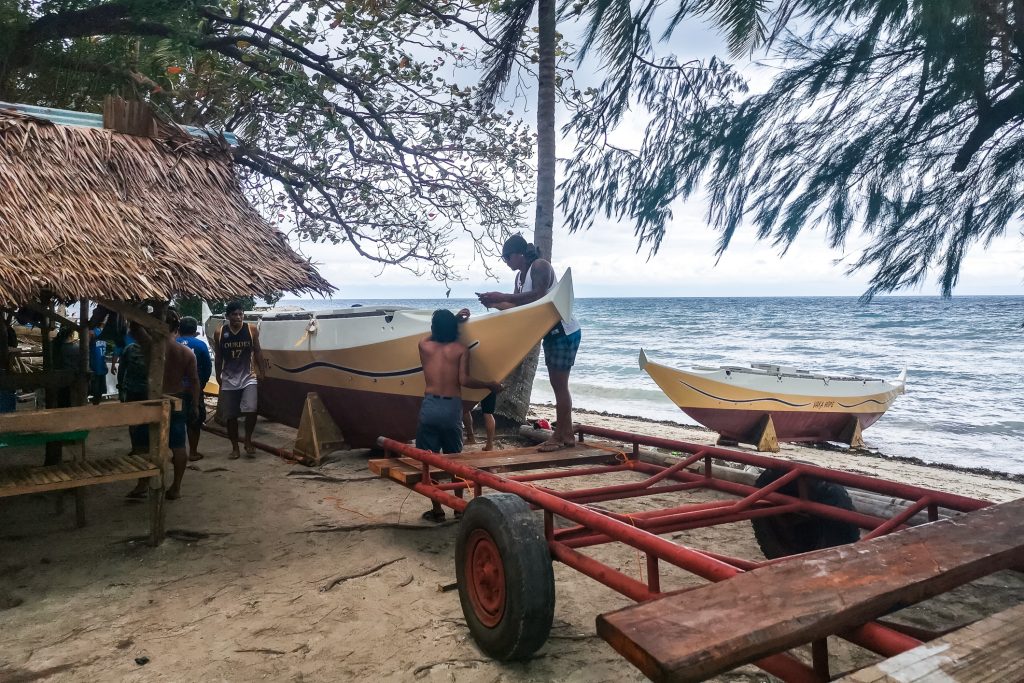
Taking down the masts is the most critical operation, as this requires some precision, ingenuity and cooperation. When the boatbuilder put our boat together, they had a long specially made pole to push the mast from the top and a bunch of guys to lift and manhandle it. When we took it down, we had 5 people and a couple of engineering principles.

Then we had to put our boat on the beach at high tide. We put it up Sunday evening, in preparation to start working Monday morning. The boat made quite the scene in the fishing village and everyone wanted to look at our vessel. When it is on land it looks much bigger than when it is on the water.
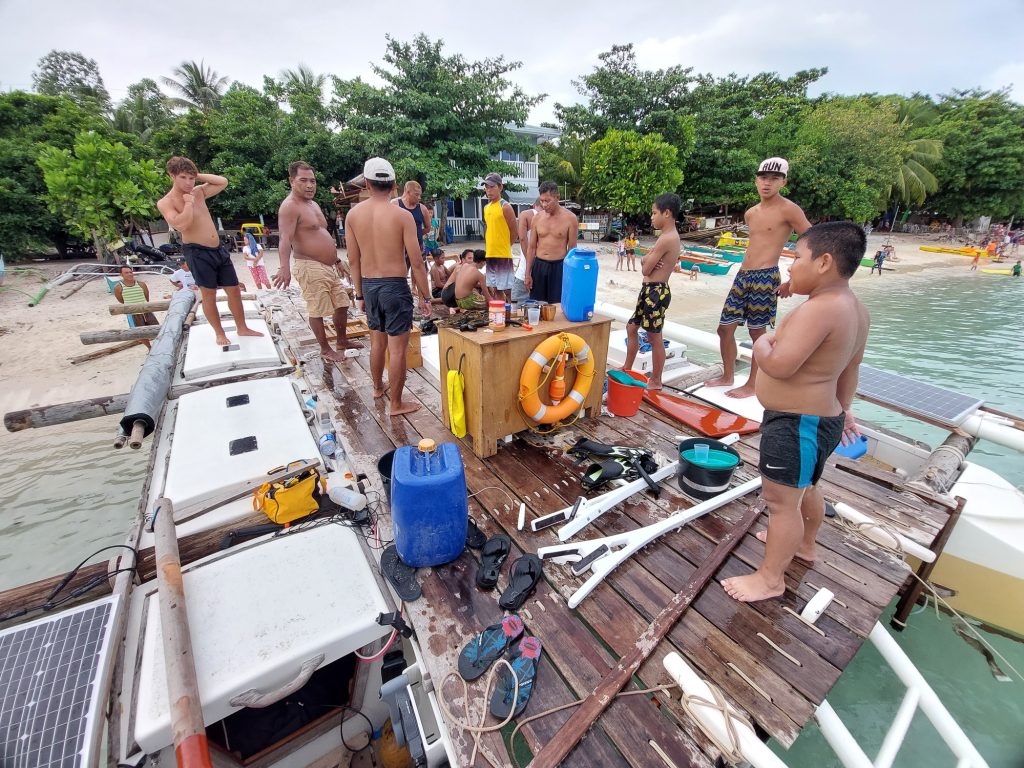
Taking the lashings off and dismantling the boat took a little more than an hour. The decks, the engine, the engine cradle and the beams. We had help from a couple of local fishermen to do this. To stabilize the hulls, we lashed in a couple of sticks fore and aft to create a temporary triangle stand. Bamboos were lashed across where the beams used to be for pushing.
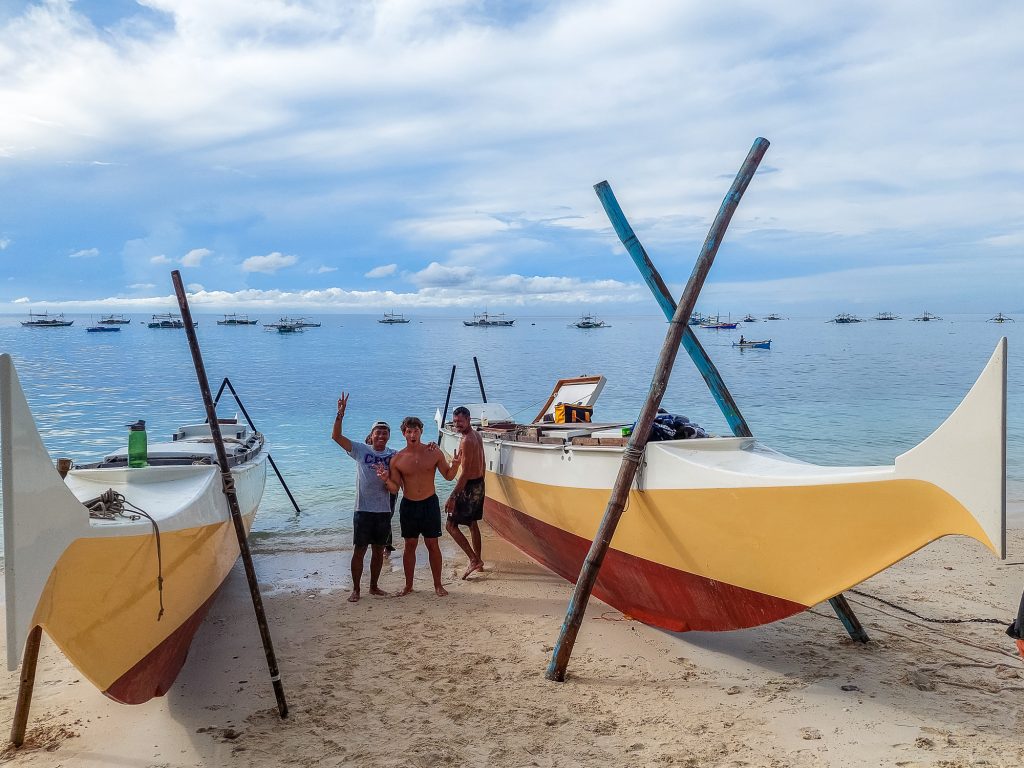
To push the hulls over the gravel and grass, we used the ancient Egyptian method of rolling the hulls on logs. 20 men from the village showed up to help us with this, and in less than an hour, both hulls had been pushed off the beach and to its new location on top of two logs.

To stabilize the two hulls in “storage mode”, we lashed down 3 out of the 5 beams to keep the boat together and upright. The engine cradle and outboard engine was also fitted in. To put the hulls level relative to each other, we used a car jack and shimmed the logs till the hulls aligned.
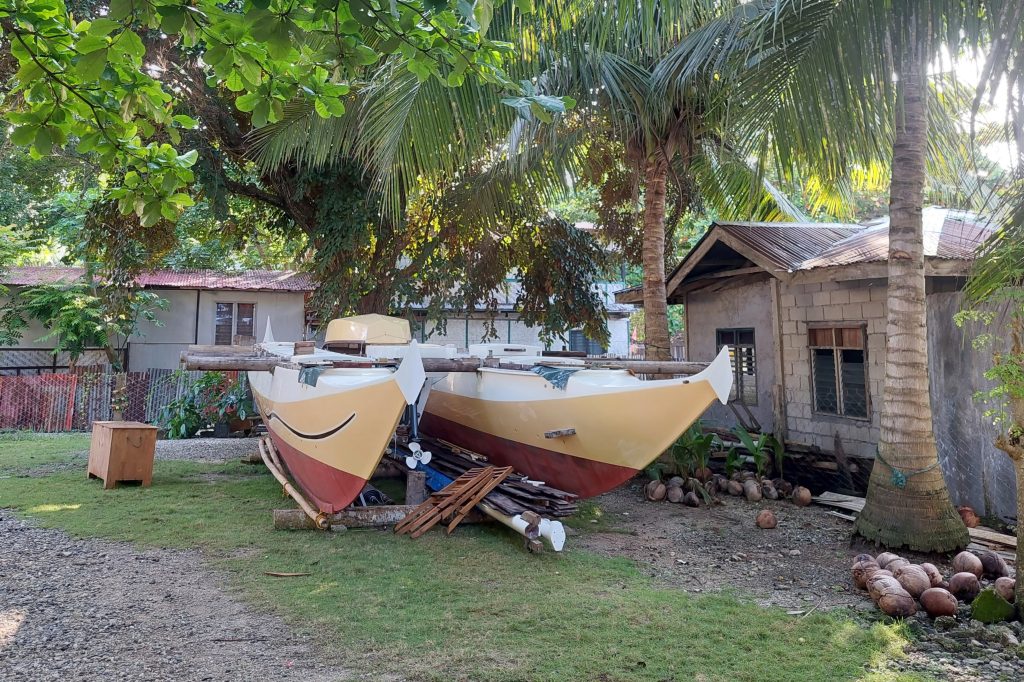
All our decks, the two remaining beams, the masts and other miscellaneous gear was stored under the hulls, while lines, solar panels, kitchen box and chairs, pluss more gear, were stored inside the cabins. Finally the hulls were covered up by a tarp to protect it from the elements.
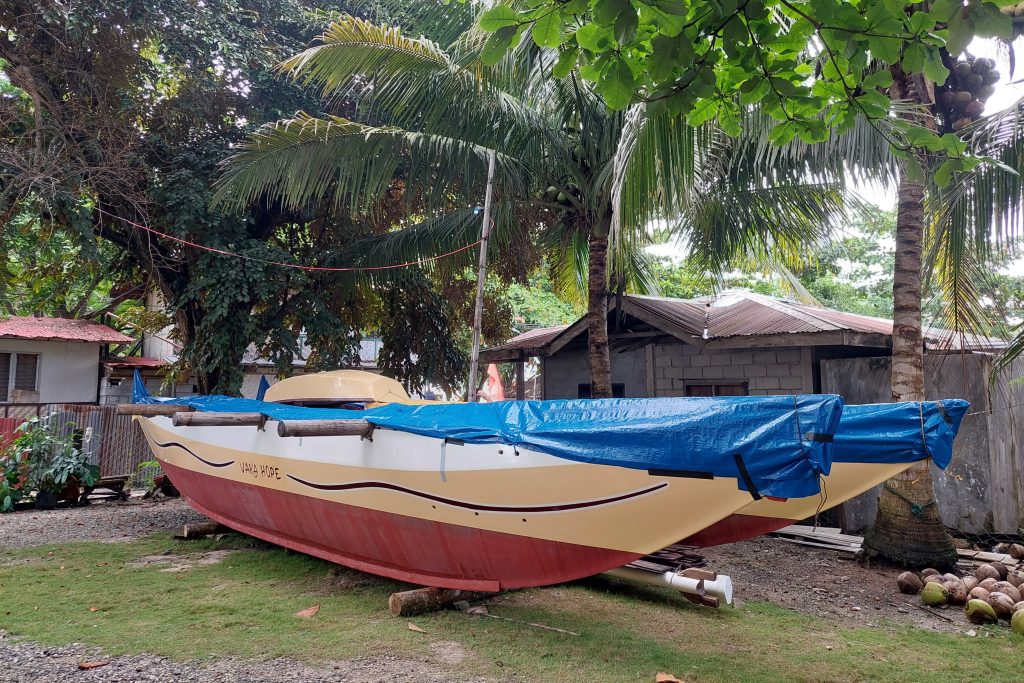
The boat is sitting in the garden of a provinical mayor’s resthouse, and the housekeeper will also look after our boat. The village is small and everyone is intrigued by this new addition to their midst. It will be safe till we return and continue the journey.
